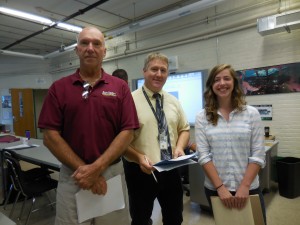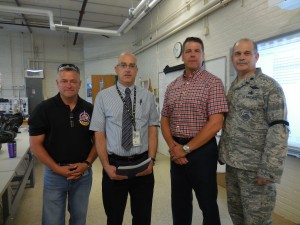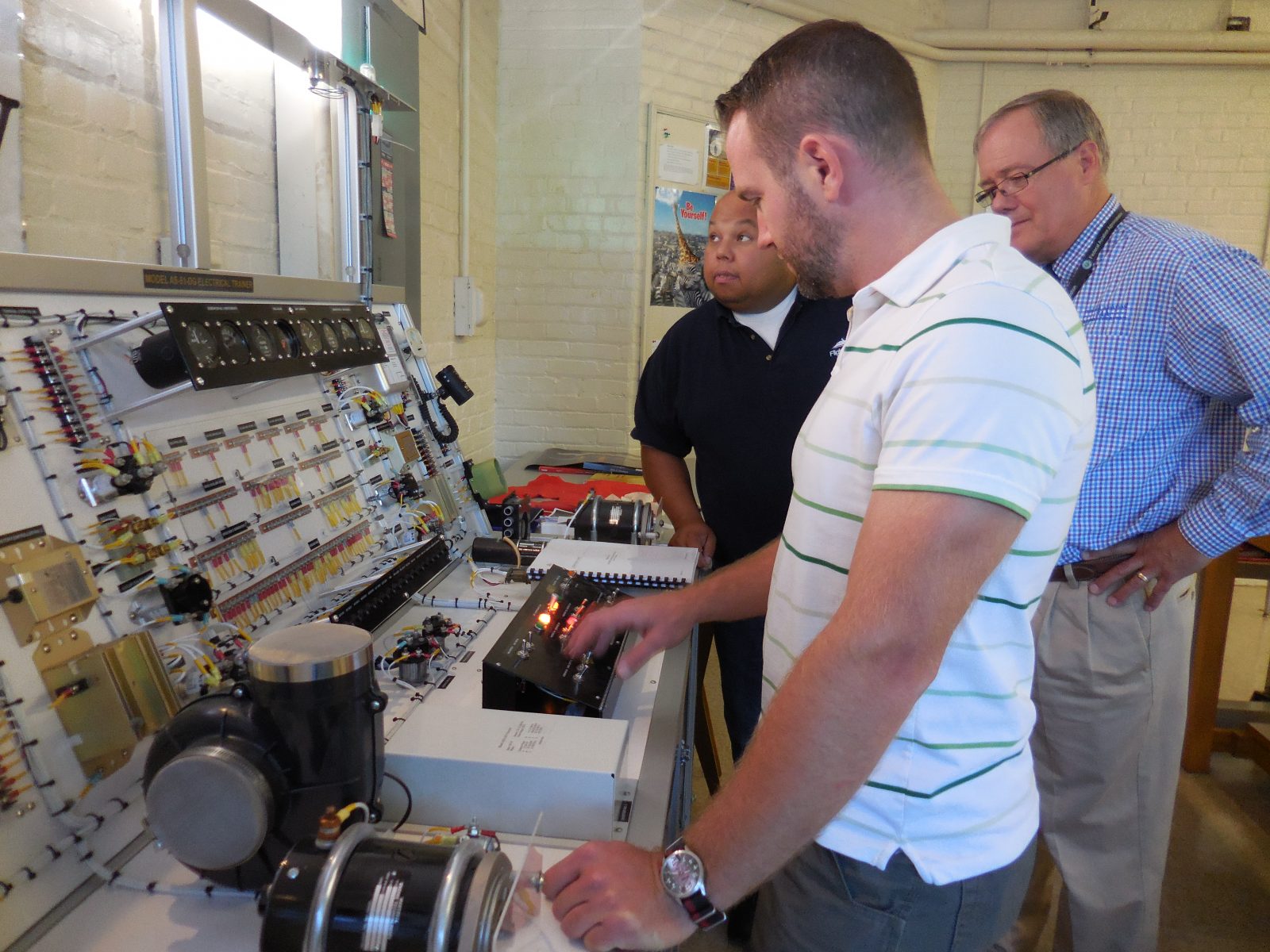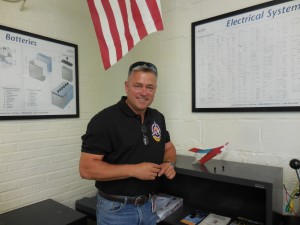WESTFIELD – Inspectors from the Federal Aviation Administration (FAA) were on site Wednesday at the Westfield Technical Academy’s Aviation Maintenance Technology (WTA AMT) program to determine that WTA has the equipment and tooling required to be an FAA-certified AMT.
Rob Lenert of the FAA, who was inspecting a mock-up simulator of aircraft electrical systems with Boeing technical rep R.J. Horacek, a part-time coordinator of the program and Juan Navarrete, an air worthiness inspector for Gulfstream who serves as a substitute teacher, said there are many steps that have to be conducted in the certification process.
“The school is doing a fine job of meeting those requirements, but we still have a ways to go yet,” Lenert said.
He pointed to all of the different mock ups in the classroom simulating aircraft systems that are used for training, and noted that the program also has aircraft in the hangar at Barnes Regional Airport that are used in the training process.
AMT Advisory Board chairman Ken Dromgold, a commercial pilot who flies for Janus out of Bradley and Board member Chris Bigelow of Barnes Air National Guard, both of whom helped to set up the program, were available to talk while instructor Galen Wilson was busy answering questions from inspectors. Both were obviously proud of the progress of the program, which has taken 3 ½ years from inception to now.
“We set some pretty lofty goals, and we’re ahead of those goals,” Bigelow said. “We’ve been lucky that Kenny (Dromgold) reached out to hard-charging individuals in the aviation industry.”
Bigelow said the inspections validate the legitimacy of the program.

(L-R) AMT Advisory Board member Tom Trudeau, FAA inspector Kevin P. Godbout and new AMT assistant instructor Krysten Renihan at the inspection on Wednesday. (Photo by Amy Porter)
“We can say we have an aviation program. But says who? The FAA. They will look at the program soup to nuts, making sure that everybody has the correct equipment for correct training,” he said. He gave the example that if a car breaks down while driving it, you can always cruise to the side of the road. If an airplane breaks down,” then he stopped. “People understand that,” he added.
For his part, Dromgold is thrilled with the staff they have attracted to the program. The newest addition is assistant instructor Krysten Renihan, a commercial pilot who was hired one month ago. Renihan, who was also helping with the inspection on Wednesday, graduated from Westfield State University in aviation management in 2014, and does a lot of her flying out of Northampton.
“They’re a grand slam home run. They all are, Galen, R. J. (Horacek) and Krysten,”

(L-R) AMT Advisory Board chairman Ken Dromgold, FAA inspector Tom Bezanson, AMT Instructor Galen Wilson and Board member Chris Bigelow all helped with the inspection on Wednesday. (Photo by Amy Porter)
Dromgold said.
Both Dromgold and Bigelow also noted the advantage of having both the civilian and military side of aviation at Barnes Airport, which brings multiple possibilities to the program.
Moving on to the simulator room where students will learn to fly on video simulators, Dromgold talked about the first year students in the program. He said there were fourteen students in the program this past year, including two girls, and they plan to take on sixteen next year. Sixty students put AMT as one of their top three selections, and forty as their top pick.
All of the students had to score above 108% to qualify for the program. Another requirement for students was to build a flying model out of parts given to them, and fly it in the gymnasium as one of their tests.
Dromgold said that every student that gets in gets a ride in an L3 Warbird from Barnes to the school and back again, landing in the grass at the Westfield Airport. Students also receive a laptop and an IPAD from the program, strongly emphasized as needed by the FAA, which is one of their main interfaces. He said otherwise they would need 100 lbs. of books just to get started.
In the metal room, there is machinery to bend, shape and weld metal. Dromgold said aviation technicians have to develop the skills of a welder, electrician, fabricator and machinist.
Dromgold said the program is a true volunteer effort, put together by volunteers, many of whom now serve on the Advisory Board. He said the name “Westfield Flying Tigers” is symbolic for many reasons. WTA already had the Tigers, but the Flying Tigers were an all-volunteer group that flew in Burma during WWII, and were incredibly successful.
He said the volunteer symbols in the program go back even before WWII. Back in the simulator room, the first airplane acquired by the program sits against the wall. It is a reproduction of a NIEU PORT 17 aircraft that flew with the Escadrille fighter squadron in WWI.
The Escadrille squadron was made up of United States volunteers who joined before the U.S. entered the war, and was commanded by a French pilot. The plane has a Seminole chief symbolized on its side. Dromgold said that symbol also relates to the Savage Arms in Westfield, which shipped ammunition to Escadrille pilots and had a Seminole chief as its logo.
The AMT program now has ten airplanes. The most recent, a MIG 15 single engine Russian fighter that was flown in Poland, will allow students to look at the differences between Eastern Bloc and Western Bloc aircraft. One of Ken’s friends operates it for the government, he said.



